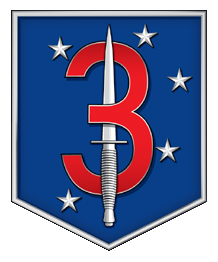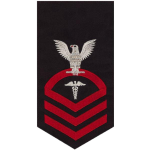Leaderboard
Popular Content
Showing content with the highest reputation on 10/29/2025 in all areas
-
Mr Mitchell, Application accepted. Within the next hour, you will receive new forum permissions which will grant you access to the Welcome Aboard section where there are instructions to get you set up with our modpack. Your next step is to report for In-Processing. This verifies that you can connect to our server and prepares you for attending your first operation with a team. If your mods are installed correctly, it should only take about 20 minutes. You will then begin Assessment & Selection by attending the next available Operation with the 160th SOAR. You will be attached to aviation headquarters and will be guided through the operation by them. After completing the operation you will report for A&S Phase 2 where any tactical deficiencies will be corrected. If you have prior Military or MilSim experience and are found to be tactically proficient in the required areas, you will skip the second phase of A&S. If Aviation HQ feels you are a good fit, you will then be selected and will complete your training with your new team. In Summary: Step 1. Review Welcome Aboard message and follow the Instructions. Step 2. Report for In-Processing. Thank you and once again, welcome, Warrant Officer Candidate. Respectfully Submitted, HM1 (FMF) Roe S-1 Chief1 point
-
Mr Arch, Your application has been accepted and you have been processed as 0372 Critical Skills Operator. Within the next hour, you will receive new forum permissions which will grant you access to the Welcome Aboard section where there are instructions to get you set up with our modpack. Your next step is to report for In-Processing. This verifies that you can connect to our server and prepares you for attending your first operation with a team. If your mods are installed correctly, it should only take about 20 minutes. You will then begin Assessment & Selection by attending the next available Operation for the team you wish to join. You will be attached to the headquarters element and will be guided through the operation by them. After completing the operation you will report for A&S Phase 2 where any tactical deficiencies will be corrected. If you have prior Military or MilSim experience and are found to be tactically proficient in the required areas, you will skip the second phase of A&S. If the Team HQ feels you are a good fit, you will then be selected and will complete your training with your new team. In Summary: Step 1. Review Welcome Aboard message and follow the Instructions. Step 2. Report for In-Processing. Thank you and once again, welcome, Private. Respectfully Submitted, HMC (FMF) Roe S-1 Chief1 point
-
The Mahgreb Morass: A Border on the Brink Tensions across the Maghreb have sharpened following an incident that risks unravelling the region’s fragile balance. Earlier this week, United States special operations forces supporting Moroccan units in Western Sahara shot down an Algerian MiG-29 Fulcrum during an engagement with Polisario Front fighters. It is the most serious escalation since Washington’s recognition of Moroccan sovereignty over the disputed territory earlier this year. Algeria has insisted the aircraft was on a routine training sortie and inadvertently crossed the border due to a navigational error. Rabat, by contrast, has condemned what it describes as a “flagrant violation” of Moroccan airspace and views the incident as further evidence of Algerian brinkmanship. Moroccan officials are reportedly observing a steady build-up of Algerian forces along the frontier with growing unease. Leaked picture of Morroccan investigators at the crash site. An older MIG-29 Fulcrum is valued at 5-10 million dollars depending on variant. For Washington, the downing of the MiG places its limited but sensitive deployment in an awkward position. What was intended as a counter-insurgency support mission has edged towards direct confrontation, blurring the line between tactical assistance and overt participation in a regional conflict. While American defence officials maintain that the engagement was purely defensive, the optics of a U.S. unit bringing down an Algerian aircraft could reverberate far beyond the Sahara. In Europe, the response has been cautious but telling. France — still diplomatically entwined with its former North African colonies and mindful of its own domestic constituencies — has revised its travel advisories, warning citizens against travel to both Morocco and Algeria. The French Ministry for Europe and Foreign Affairs cited “heightened regional tensions and unpredictable security conditions” as grounds for the update. The Western Sahara question, long relegated to the margins of post-colonial diplomacy, has returned as a flashpoint where old rivalries and new alliances intersect. The downing of a single aircraft has reminded all parties how swiftly the Maghreb’s latent hostilities can ignite — and how easily outside powers can find themselves drawn into the desert’s dangerous geometry.1 point
-
Collateral Damage in the Desert: Civilians Pay the Price of America’s War The smoke had barely cleared when villagers near Mheiriz discovered the bodies. Among them were men known not as fighters, but as farmers — unarmed, caught in the blast radius of what locals insist was an American airstrike. Grain sacks lay scattered among the rubble, a bitter symbol of lives cut short while tending the land. In the dusty market square, grief turned to anger. Only hours earlier, American troops operating under the banner of “counter-insurgency” demolished a local shop said to have been frequented by ordinary families. Residents describe it as nothing more than a place to buy bread, oil, and tea. Its blackened walls now stand as stark testimony to what they call the indifference of foreign soldiers toward Sahrawi lives. A typical local market in western sahara For the Polisario Front, these incidents are not isolated accidents. They are the predictable outcome of a campaign that labels resistance as terrorism and dismisses local suffering as the price of “stability.” “Every bomb dropped, every shop destroyed, every farmer killed — it only proves what we have always said,” a Polisario representative in Tindouf declared. “The United States fights not for peace, but to keep Morocco’s grip on our homeland.” Washington insists its operations target armed insurgents, not civilians. But on the ground, the distinction is lost in the dust. For the families burying their dead, the argument rings hollow. In refugee camps and villages alike, the message spreads: America has chosen sides, and the Sahrawi people — once promised self-determination — are now treated as collateral in someone else’s war. As images of shattered fields and ruined storefronts circulate online, the Polisario claims momentum not from battlefield victories alone, but from what they see as growing proof that U.S. intervention deepens, rather than resolves, the suffering in Western Sahara.1 point
This leaderboard is set to New York/GMT-04:00

